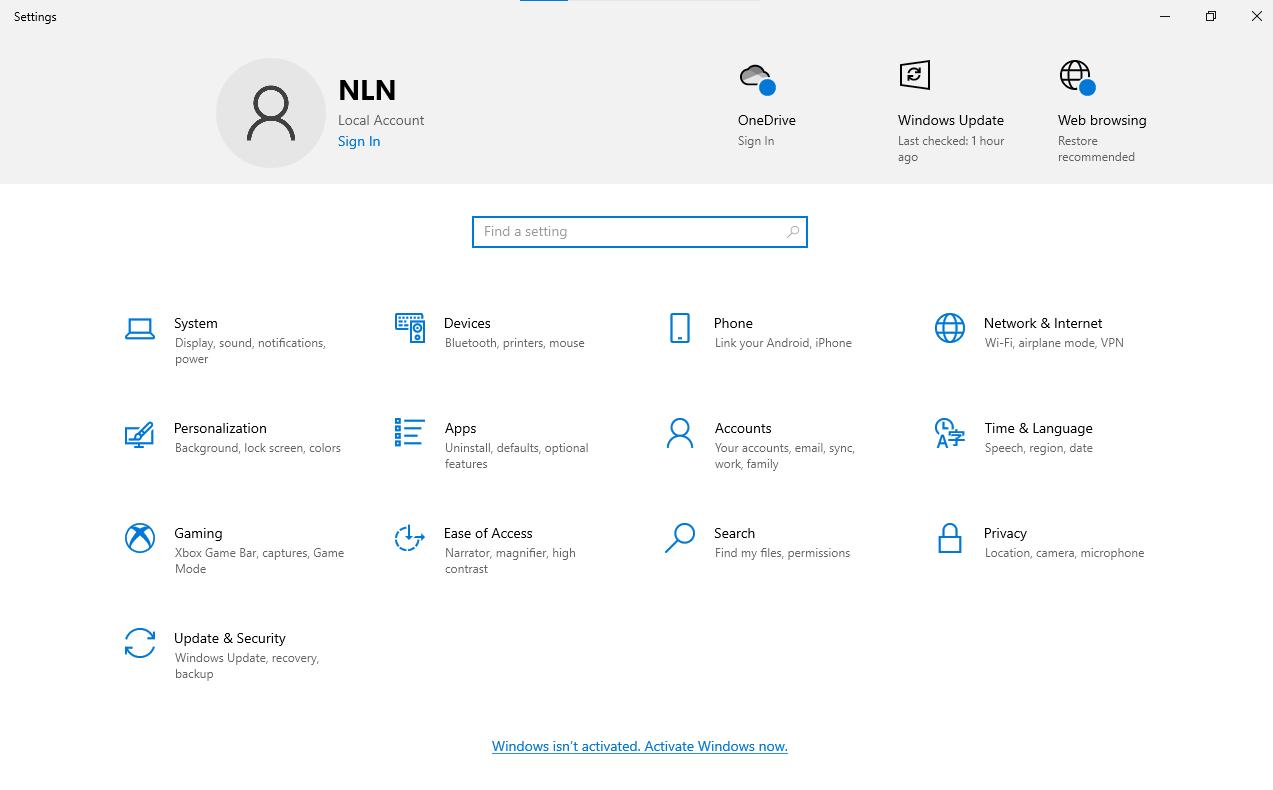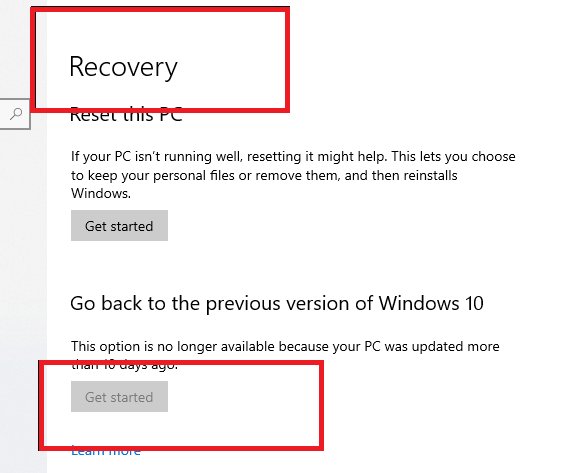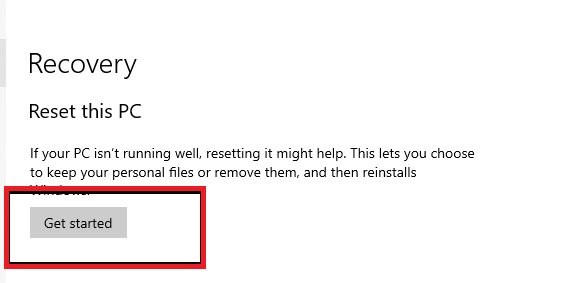Has your computer suddenly stopped working after you finished the latest Windows update? Or are you unable to restart it after updating your Windows? These issues are common with Windows 10 and most people face them because of several reasons. You might not be able to identify it if you are a non-technical person. Let’s discuss significant reasons why your computer won’t restart after the Windows 10 update and its possible solutions.
Some Possible Reasons That Computer Cannot Start
There can be different reasons why your computer won’t restart after an update. This could be because of a Windows bug, a failure in the computer hardware, or any other similar problem. Take a look at the five possible reasons that might stop your computer from restarting.
- Your computer might not have shut down properly last time.
- The RAM or your hard drive is affected because of some virus.
- You might not have shut down the computer properly last time.
- The drivers of your system might not be installed properly.
- Your computer has Fast Startup enabled.
There can be different other reasons as well for this problem. The fixes are all similar to each other and you must implement them in the right way to restart your computer and avoid any issues.
How Do You Restart A Computer That Won’t Start?
You can utilize different techniques to restart a computer that won’t start. However, it is important to follow each step closely to avoid any issues or data loss. Let’s take a look at the five different methods that you can utilize to fix the issue.
Method 1: Force Power Off Windows
The first method is simple, and everyone can utilize this technique to fix the Windows not restarting issue. However, this fix can only be effective in some cases. Take a look at the steps you should take to force power off the Windows.
-
Force Shutdown your computer by pressing and holding the Power Off button until the computer does not Shut Off.
-
Click the Power button again to allow the computer to Restart.
If your computer still does not Restart successfully, you need to make the computer enter into the Recovery Environment (WinRE). This will help you to force the Restart with the help of specific Shortcut Keys.
-
Repeat the procedure up to three times to make the computer enter the Recovery Environment (WinRE).
-
Select Troubleshoot > Advanced options > Startup Settings.
-
Enable the Safe Mode.
You can also keep pressing the F8 key to force the computer directly to Restart through the Safe Mode. Once you have followed all the steps correctly, the computer Restart problem will be fixed automatically. However, you need to proceed to the next fixes if the computer still does not restart.
Method 2: Run The Power Troubleshooter
A power troubleshooter is another helpful tool that can help you reboot your system effectively. The tool identifies the troubleshooting problems and fixes them accordingly. Take a look at the steps to run the Power Troubleshooter to resolve your computer’s Windows troubleshooting problems.
-
Open the Windows Settings from the left pane.

-
Hover over the Power option and click the Run The Troubleshooter option.
The power troubleshooter will help the internal systems of the computer to fix all the troubleshooting problems. Once the troubleshooting is complete, you need to simply restart the computer and see if the computer is restarting fine or not. Most of the time, the issue arises because of the bugs in the internal of Windows 10 and the power troubleshooter fixes all the bugs accordingly.
Method 3: Boot Into Safe mode
Booting into Safe Mode is another effective way to fix all the Windows 10 restarting problems. When you are loading specific programs or restarting the entire system in safe mode, the computer won’t consider the presence of corrupted drivers or Windows files. This will protect your computer from different issues and it will Restart fine. Take a look at the steps you should take to restart the computer in safe mode.
-
Open your computer Settings.
-
Click Update & Security.

-
Select the Recovery option from the left list and click Restart present under the Advanced Setup.
-
Click Troubleshoot > Advanced Options > Startup Settings.
-
Tap Safe Mode or Safe Mode With Networking from the list.
-
Restart your computer again.
Once you Restart the computer after taking these steps, the computer will Restart under the safe mode. Now that you have activated the Safe Mode to Restart your computer, the system will ignore all the corrupted files and try restarting. If the issue is still not fixed, you should proceed to the next fix.
Method 4: Rollback Windows Or Reset The PC To Factory Settings
Sometimes you can’t do much about the bugs in the latest versions of Windows. You can't do much if the newest update of Windows is not compatible with your PC. So, the only way you can fix this issue is by rolling back the latest version of Windows 10 to its previous one. If the earlier version also creates the same issues, you need to reset the system to its default settings and check if the issue is fixed.
-
Open your computer’s Settings and choose Update & Security.
-
Click the Recovery option from the left side and tap Get Started.

Unfortunately, you won’t be able to utilize this feature if you updated the system more than 10 days ago. If you were able to fix the issue and the computer is still not restarting fine, you should reset the computer to its default settings.
-
Go to your System’s Settings.
-
Click Update & Security > Recovery.
-
Tap Get Started under the Reset this PC option.

Once you follow the steps correctly, the computer will automatically reset to its default settings. However, the computer will erase all the data present. So, ensure you have already removed all the crucial data from your computer before applying this solution.
Method 5: Use PassFab FixUWin (Easy Steps With High Success Rate)
If you cannot successfully reboot your computer even after following the techniques we have mentioned before, the PassFab FixUWin tool can help you fix the issue. The tool uses a bootable ISO image into a disk that can help boost the Windows properly. It fixes all the problems and repairs the corrupted files to make sure your computer reboots fine every time. Compared with the other methods, it is much more easier with high success rate.
- Install and launch the PassFab FixUWin tool to another PC that works fine.
-
Insert a CD/DVD or USB into the computer, launch the tool, and click Boot Disk Now.
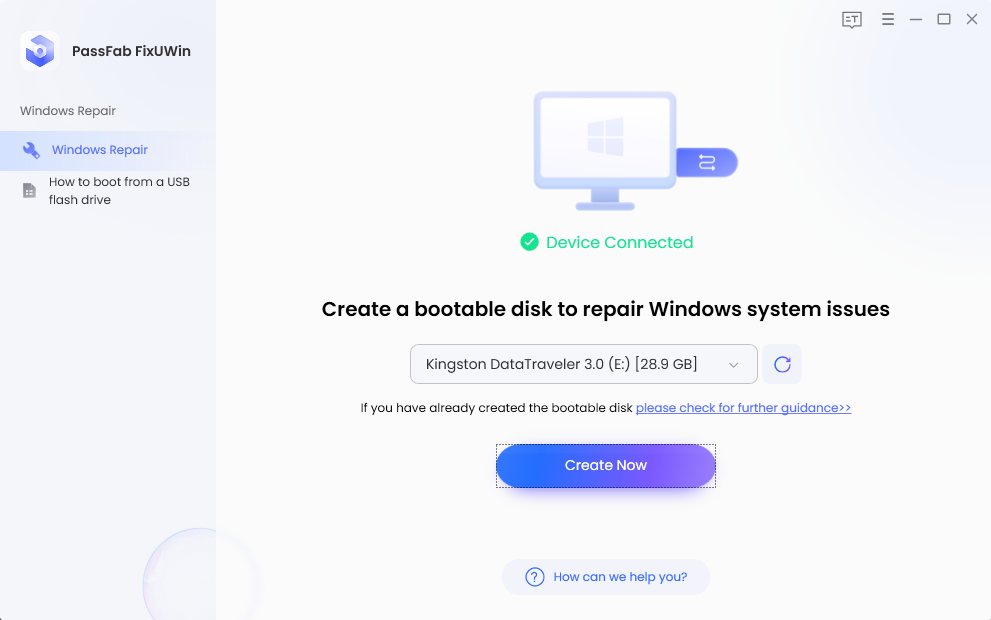
-
Select your inserted device into the next window and click Next.
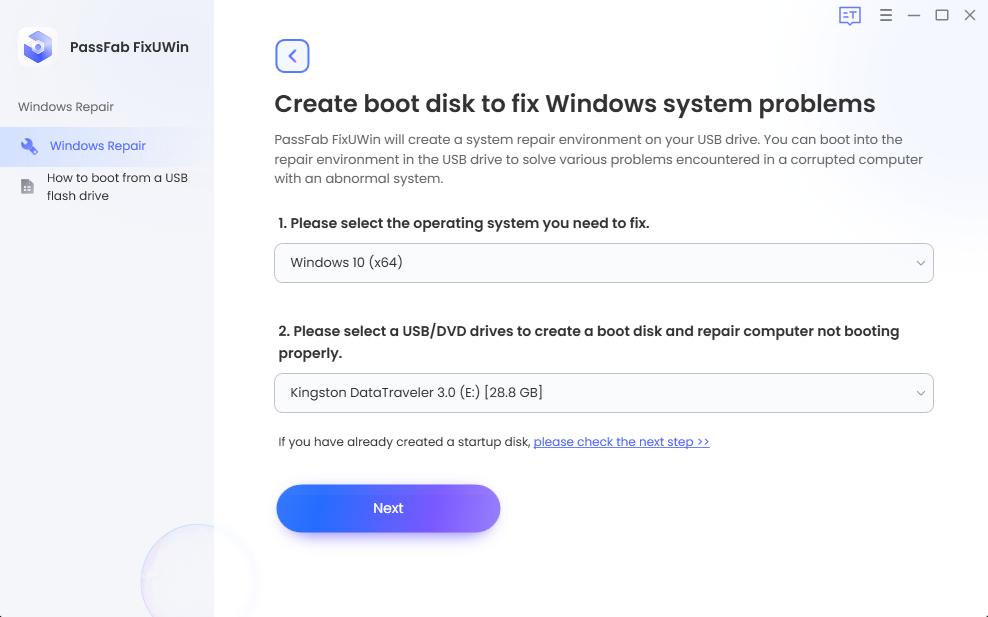
- Insert that CD/DVD or USB into the computer, then cannot Reboot.
- Restart the computer and press the F12 key to enter the Boot Settings and select your Inserted Disk.
-
Click Automated Repair from the Solution Center on the tool, select the Disk that needs repairing, and click Start Repair.
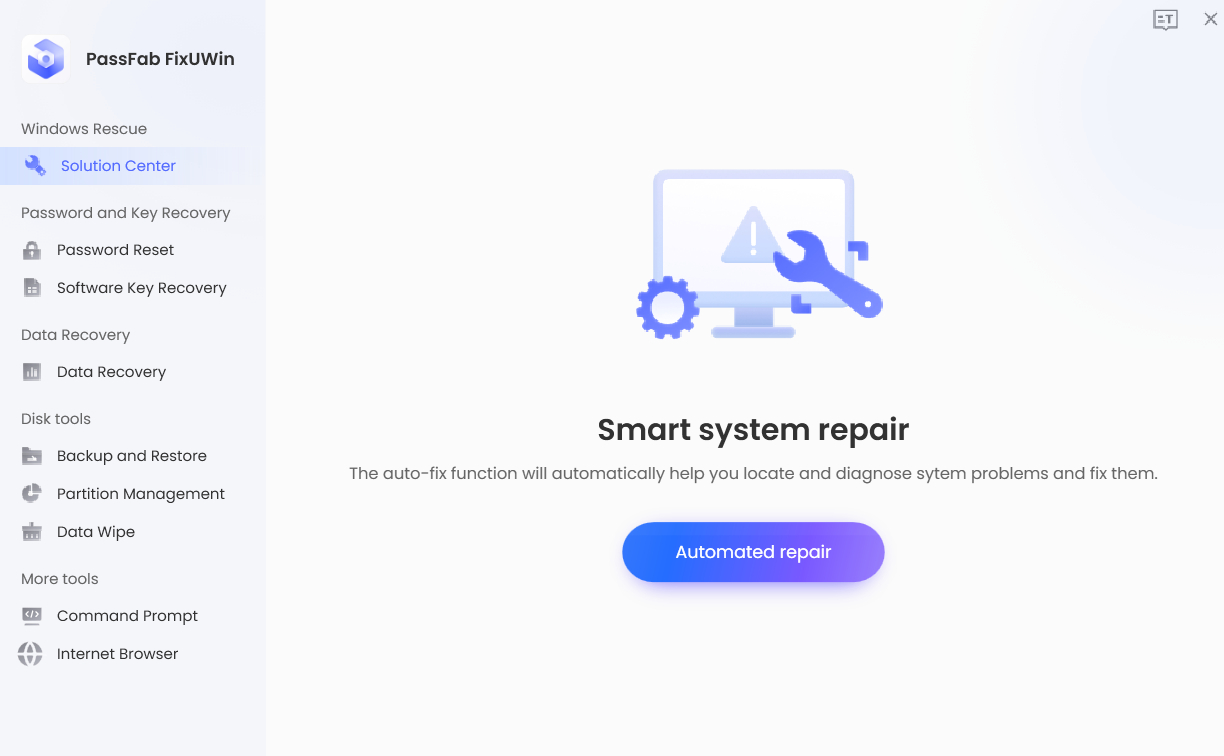
-
Tap the Restart option from the next window. You computer can be fixed successfully.
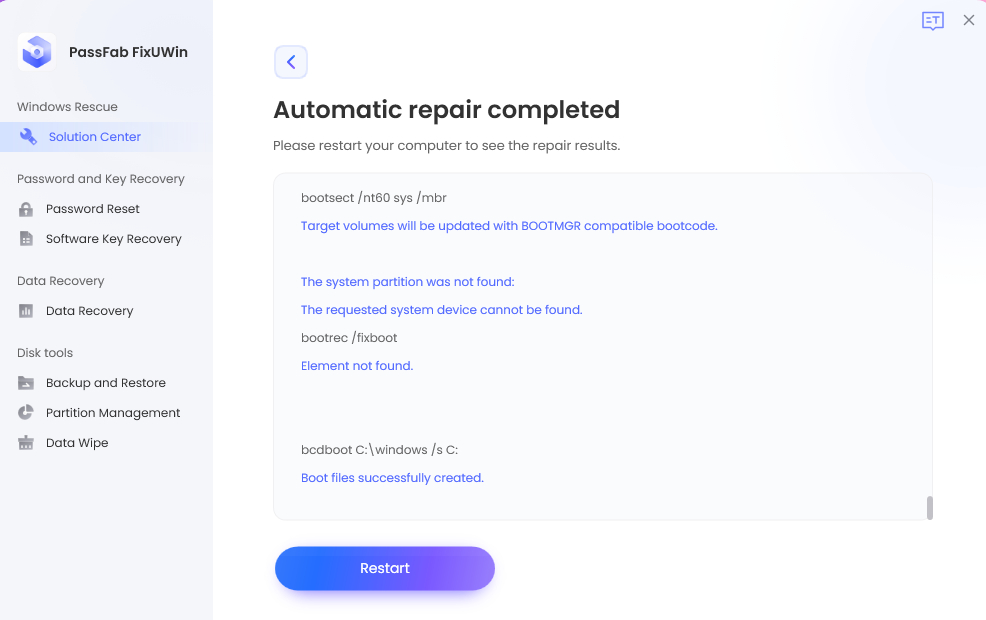
After follow the steps, the tool will repair the Windows won’t Restart problem effectively.
Conclusion
There can be different reasons why your computer won’t restart Windows 10. You can apply multiple fixes to this problem. But in some cases, no techniques will be able to fix the issue. Due to this, it is important to choose a third-party tool like PassFab FixUWin tool to resolve the issue. The tool will repair all the internal corrupted drivers and take all the necessary internal actions so that the computer starts restarting the Windows fine.
